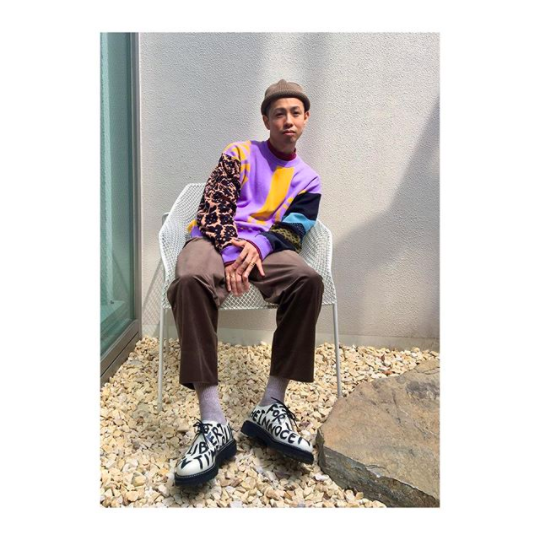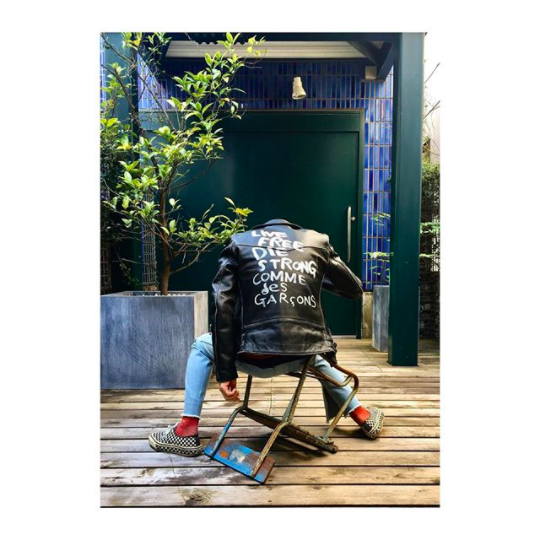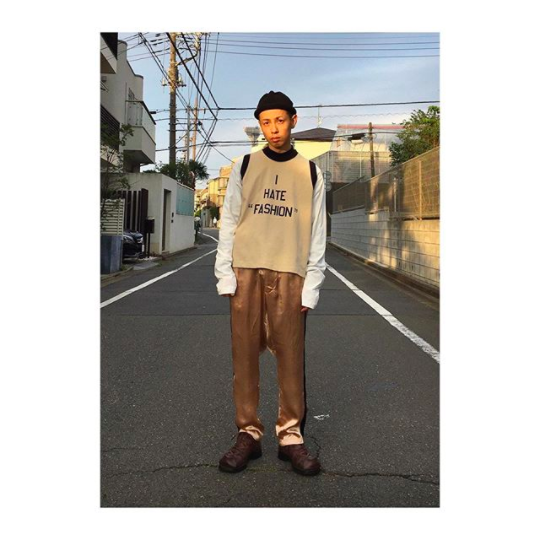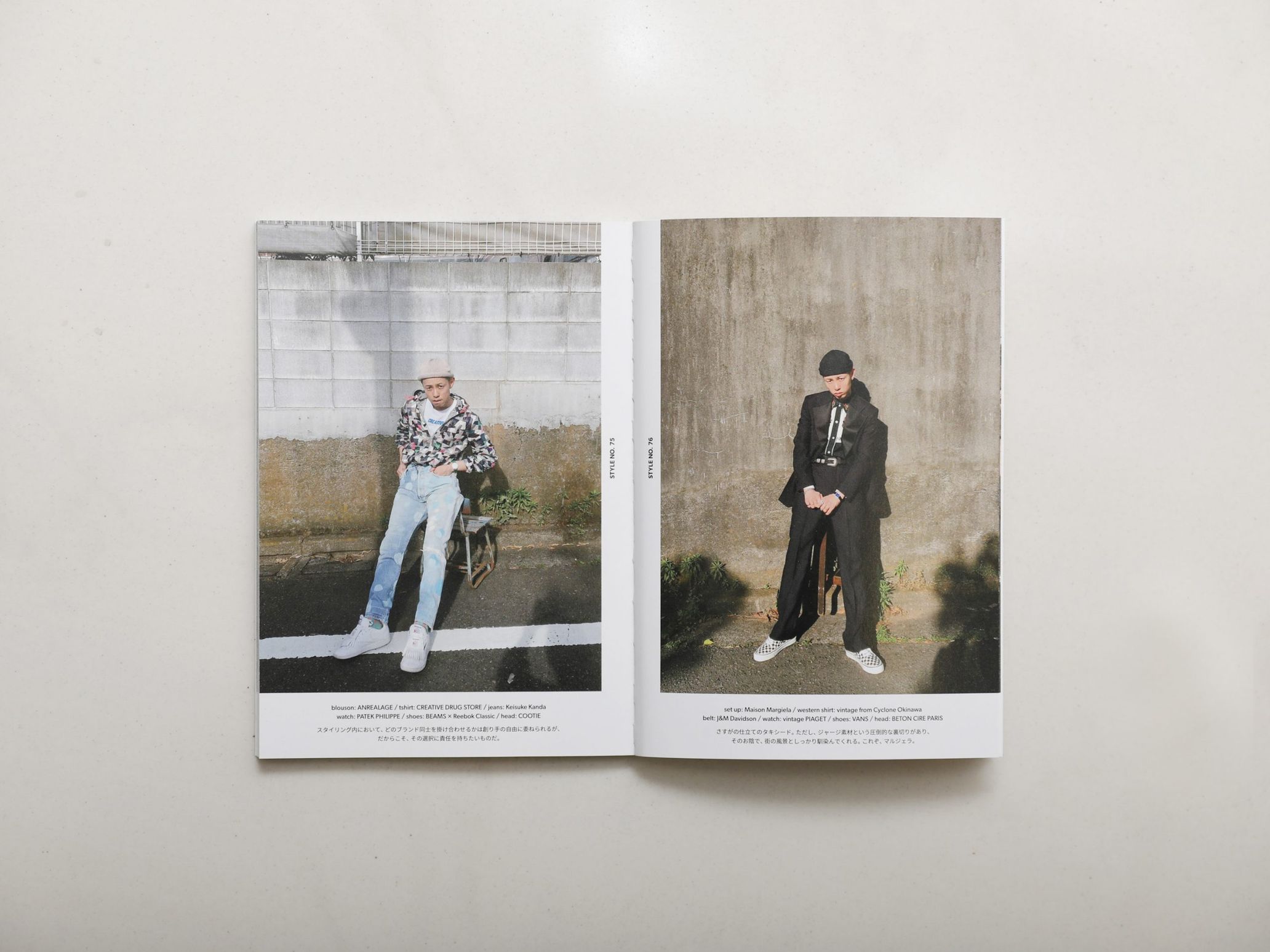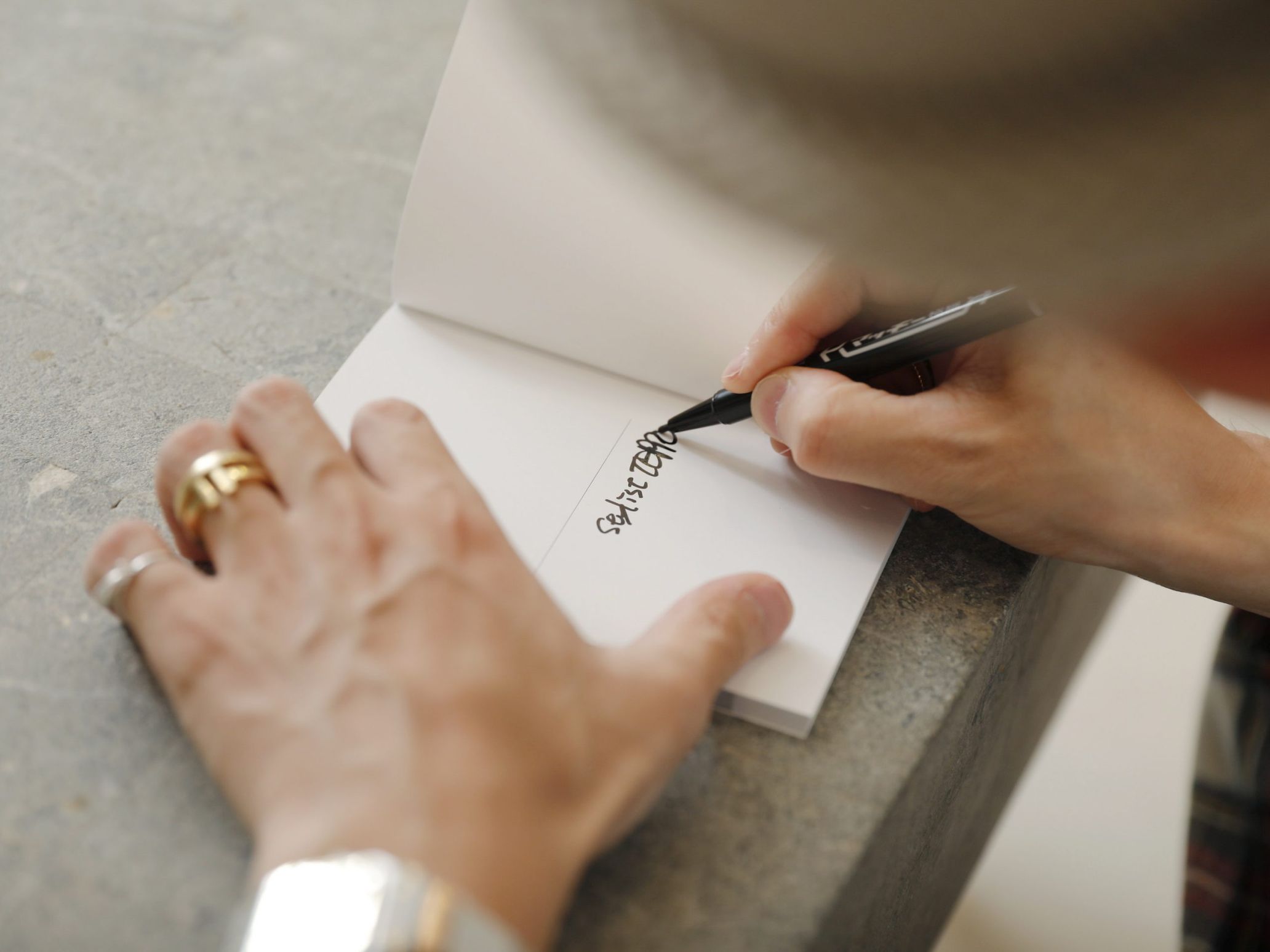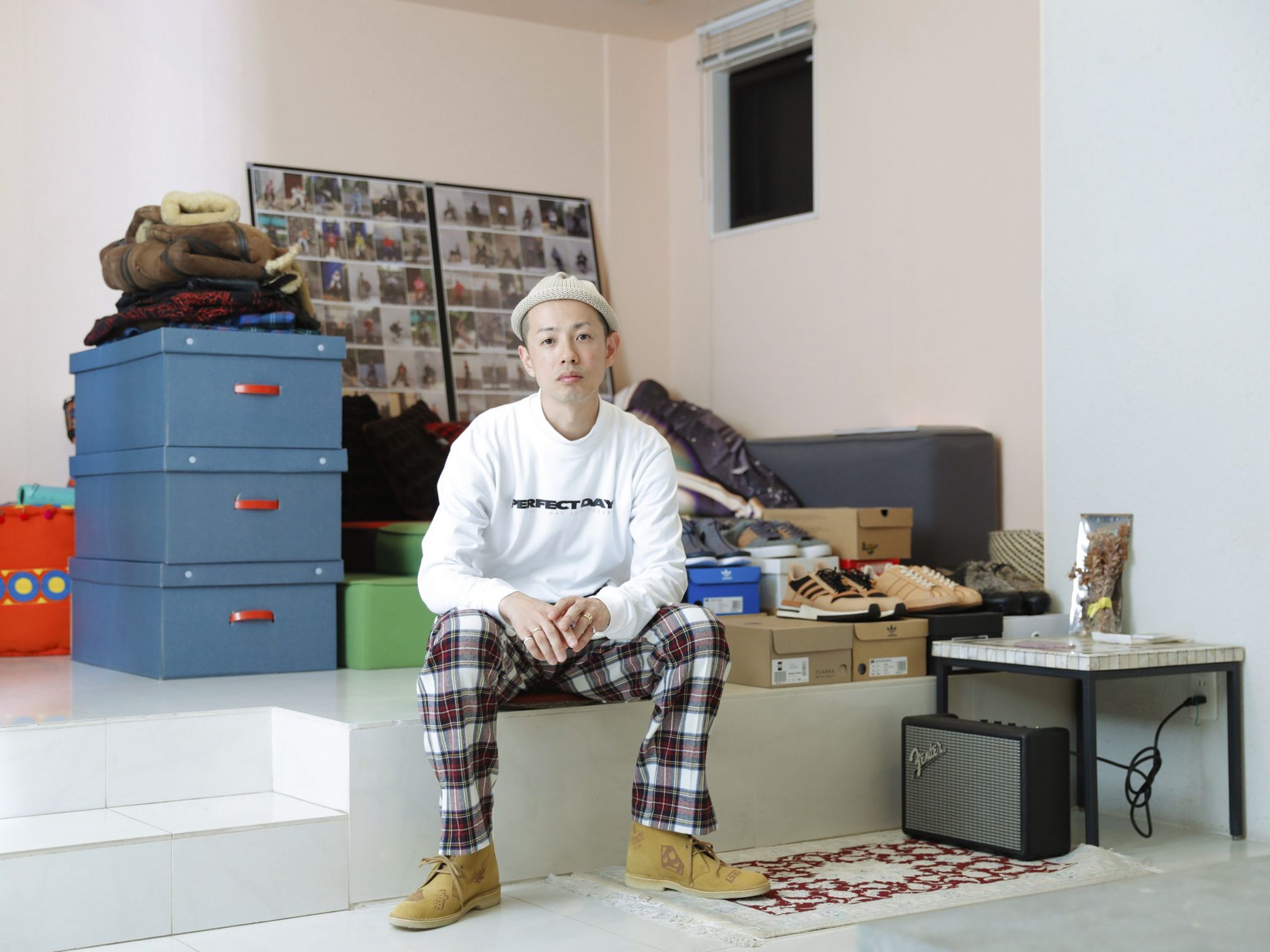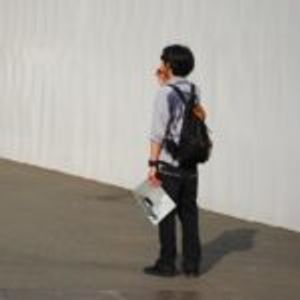Stylist TEPPEI independently produced his book “#Dayssnap,” a collection of 80 photos he posted on Instagram from April 7th to May 5th while in quarantine. He plans to distribute this book books to his followers for free on an application basis. We asked him about why he started this project and decided to turn it into a book. We also used this book as an opportunity to ask him about his thoughts on fashion and personal style.
Recognizing that I owe my life to clothes
――Your independently published book, “#Dayssnap,” is a collection of snapshots you uploaded to Instagram during quarantine. Why did you start taking these photos in the first place?
TEPPEI: Looking back, we were already starting to see the effects of coronavirus around the end of March, and one by one, my shoots were being cancelled. The world seemed to be in chaos as rumors went around about whether another state of emergency would be declared or not. And in that state of chaos, the state of emergency was officially announced on April 7th. I was at home that day, so I asked my wife to take photos of what I was wearing, and that’s how the posts began.
――Had you already decided to post these snapshots as a series or gather them into a book?
TEPPEI: No, not yet. I hadn’t even thought of posting every day. I just started without thinking too much about it. It was a pretty rough time――I felt like my life was in crisis and I was experiencing anxiety like never before. On top of that, I was wondering what clothing and fashion, which have always been part of my life, were really even about. Now that I’ve gathered everything into a book, I feel like I’m able to put my actions and emotional state from that time into words. For me, the action of dressing up to take a picture was a way of answering questions within myself. In short, I think it was a way of reflecting on my relationship to clothes.
――What did you realize from your reflection?
TEPPEI: I recognized, in a new light, that I owe my life to clothes. For some people, clothes are just something they wear, but for me, they’re really important. Especially when I was still a beginner in the styling world–I wasn’t getting gigs and wasn’t in the position to be confident in myself. At that time, I fell into a state of self-hatred and was in such bad shape that I was just holed up at home, unable to even meet with friends. But then, some ANREALAGE clothes I had ordered at an exhibition were delivered to my house. It made me think that if I had such cool, amazing clothes, I should wear them out. When I left the house to go to Harajuku, someone took a photo of me, and that photo actually led to a work opportunity. All my turning points, just like that one, are always related to clothes. It’s as if clothes have given me an invisible push at many different times in my life. I feel that the reason I’m able to live like this now, to live this life, is because I have clothes.
――By the way, how did you take the photos?
TEPPEI: My followers were asking me the same question when I posted them. They were all taken on my iPhone by my wife.
――In almost all the photos, you’re sitting in a chair. Why is that?
TEPPEI: Sitting was my personal way of expressing the idea of “Stay Home.” I swapped out the chairs to fit the outfit, moving them around my home when we’d shoot since we were in quarantine. In the last photo, there’s no chair because it was the last day of quarantine and I wanted to express the feeling of moving forward by taking the chair out.
I’d be happy if I could repay the fashion world even a little
――When did you decide that you wanted to create a book?
TEPPEI: I feel like since the pandemic, there have been less chances to dress up since we’re avoiding nonessential outings, but I’ve noticed that wearing clothes makes me feel calmer and more at ease. This is something I’ve become more aware of through uploading my personal style shots. For other people, that feeling might come from watching movies, listening to music, reading books, or doing other things people consider unnecessary. But I’ve learned to see unnecessary things in a positive light, since they still have the power to save people. To dress up is to dress up your mood. I wanted to show my followers that it’s not about where you go or who you meet. Even if you’re just at home, you can change your mood by dressing up. I thought in order to show people that, it’d be best to gather everything into a book, something tangible.
――Who handled the design?
TEPPEI: When I decided to give this project a tangible form, I wanted to be responsible for everything, so I decided to produce it independently. But there were parts of the independent production that I just couldn’t do alone. Since the production budget was limited, I couldn’t do it without people who shared my ideas and wanted to work with me, rather than for money. At that time, the first person who came to mind was YOSHIROTTEN. We’ve known each other for so long that he understands what I’ve been doing and thinking without me having to tell him, so when I talked to him about it, he immediately agreed and even gave me advice. His team and the staff at YAR also helped me out a lot, and I’m very grateful for that. By the way, the design on the inside of the magazine is an homage to the street style magazines TUNE Magazine and FRUiTS Magazine. In particular, I’ve been on the cover of TUNE, and they’re an important magazine that got me to where I am today as a stylist. I was just someone who loved clothes, and that was all I had, but TUNE gave me confidence. They were my first ally, even before my friends. I made this magazine thinking about how grateful I am for them.
――You independently produced this book. How will you go about selling it?
TEPPEI: The fashion world has taken a huge hit as a result of the coronavirus. So I decided to distribute my book for free to my Instagram followers and peers. If distributing this for free can be even a little repayment to the fashion world, which has saved my life, I would be happy.
――How will you distribute the book to your followers?
TEPPEI: I plan to post details on how to apply on my Instagram, but on the book, I’ll write my name and the name of the person I’m gifting it to. Putting my handwritten signature on the book allows me to put more of my own passion into it and connect with the person I’m gifting it to.
――I’d love to ask about your styling. From high-fashion to street, women’s to men’s, loose to tight, monotone to colorful–you’re really free with your styling. At first glance, it looks like you don’t follow any rules, but it’s all quite unified. What kind of criteria do you have when you choose clothes
TEPPEI: There’s a bit of logic, but I guess I just rely on my intuition to choose what I like. This intuition comes from my days walking around Harajuku and Shibuya in the 2000s. I think Tokyo in the 2000s was a time where the popular styles of the 80s and 90s, high-fashion, street style, and all kinds of styles came together into one. I was living in that era in real time, so even today, I think that allows me to seamlessly choose clothes in the way they did back then.So, my self-styling is a mix of all kinds of cultures and genres, with a touch of my own style added at the end.
――That touch of your own style makes all of your self-styling look unmistakably “TEPPEI.” Do you have rules you personally follow?
TEPPEI: Maybe this is an exaggeration, but if you consider self-styling as a form of expression, it’s no different than a musician making music, a painter painting, or a chef cooking. A chef makes various dishes and a musician makes various music, but even if they create all kinds of things, I think everything ends up becoming their own version of it. In the same way, no matter what I do, my self-styling always ends up feeling very “me.” I guess if I’m being cynical, it might just be because you all know me. I’ve been adding my own touch to style for a long time, and maybe it’s because you’ve all seen my style that you feel like it’s very me.
I want to believe the future of fashion is bright
――Lastly, what do you think is the future of the fashion scene?
TEPPEI: When I was oversimplifying the issue, I felt that there would be an overall bad vibe in the world due to the pandemic, and then we’d see an overload of uninteresting pieces. But fashion is a multifaceted thing, and looking around the city lately, I’ve felt that while some brands get defensive, others make strong items in times like these.
I have no doubt that the majority of you felt your lives were in danger because of this coronavirus disaster. Although it’s not like someone pulled a knife on us, all of us across the world felt threatened by an invisible force at the same time. In a sense we’ve adapted even to that threat, but I think a lot of people have become acutely aware of the notion that you only have one life. When people remember that and think about how to enjoy fashion, I think many who return to fashion will think that if they’re going to wear clothes, they may as well wear something strong or interesting. That’s not to say that one is 100 and the other is 0, but I do feel that there’ll be more people like that in the future. That’s why the future of fashion isn’t all dark. It’s bound to get brighter, too. Rather, I want to believe it will get brighter. And even if there aren’t many people who are looking for brightness, I want to stay close to those who are.
TEPPEI
TEPPEI is a stylist born in 1983 in Shiga Prefecture. After moving to Tokyo in the early 2000s, he was featured in street style magazines such as FRUiTS Magazine and TUNE Magazine, where his unique style began to gain a cult following in Japan and overseas. Following his debut, he started working as a professional stylist. Currently, he is involved in the visual direction of the ANREALAGE 2021 Paris Collection, the official uniforms of the Japan Pavilion at Expo 2020 Dubai, and numerous artist images and brand visuals.
Instagram:@stylist_teppei
Photography Shinpo Kimura
Translation Aya Apton


